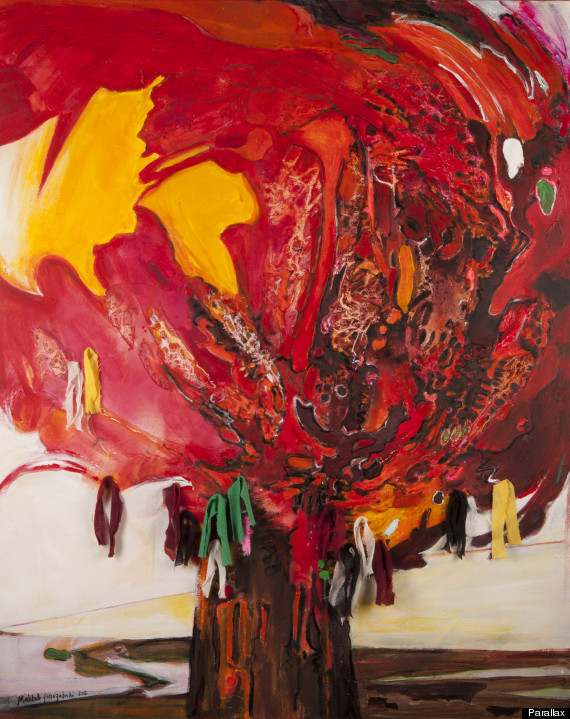Parallax Art Fair does not seek to answer questions. It tries to contradict itself. It doesn't just avoid themes like abstract, figurative and conceptual, it asks you to examine the very fabric of these words. For these reasons, we are excited that this UK-born art fair is finally coming to New York.

Mahtab Firouzabadi, Make a wish, 100x80 2011, mix media
We spoke to Dr. Chris Barlow, art historian, theorist and founder of the fair, about its beginnings. Before Parallax was a fair, it was an exhibition, featuring a gallery of "historical" works by living artists that looked as if they were made in the 17th century. According to Barlow, even an art lawyer was convinced the pieces were not contemporary. There was a contradiction in the binding of the exhibition, one that oozed beyond the works themselves and into the gallery space, the context and the knowledge of the general public. This spark of contradiction is the basis for what came to be Parallax Art Fair, which now travels to London, New York and Miami.
The fair is a platform for national and international artists to present their work without commission charges and explore unconventional ideas, not normally encouraged in a commercial setting. The smaller size of the fair offers an intimate feel while also raising awareness of issues of space, lighting and organization.

Stephen Hall, Novice Punk 2011, Acrylic on Canvas, unframed. 40 x 32
Oftentimes art fairs are pure commercial events, with artworks curated and organized by theme or movement. The enigmatic founder of Parallax explained how this model serves as a jumping off point: "My research in deconstruction has showed it is very hard to say this particular object has a theme, this one doesn't have a theme... This is what the fair is trying to raise awareness of." Barlow then recalled an artist who worked with deconstructive theory -- her artworks were incredibly fragile and designed to break. A viewer was supposed to bash into the work and knock it over. While she was used to working with a very large space, her exhibition at Parallax confined her to a small one, and suddenly everyone was forced to interact with the artwork in a real way.

3 Spoons Full, 15cm (w)x 13cm (h), dessert spoons, plaster, paper with ball-point pen and pencil
"Overall, in terms of artists, we are not looking for an overall style or an overarching idea," Barlow said. "There are a lot of contradictions in the events and exhibitions. This is very much important to the event itself. When I begin to put artists together in the space I am looking for tonal qualities. If two artists are interested in conceptual work I will put those together. If there are contradictions in the work I try to bring those out in the catalogue essay, we want to highlight those." Rather than make the space surrounding the artworks invisible, Barlow treats the space on equal ground as the artwork itself. Nothing is privileged, everything questioned. Aside from the intellectual democratization there is also a financial leveling, a refusal to let commerce dictate an art event. There are no commission charges and artists are able to present non-commercial work or even just ideas if they feel compelled.
Parallax looks for contradictions in itself and highlights them, harmonizes off them and tries to make them accessible. Contradictions and questions are at the root of the project, so if you feel like you can't quite get your head around it you may be on the right track. Yet at the core Barlow made it sound simple: "Raise issues and ... make it accessible to a public audience." Barlow swears although he is rooted in academics, the fair is egalitarian. New Yorkers: You'll have to see for yourself this weekend.
Parallax Art Fair will be held at 82 Mercer in Soho, New York, from August 3-5, 2012.